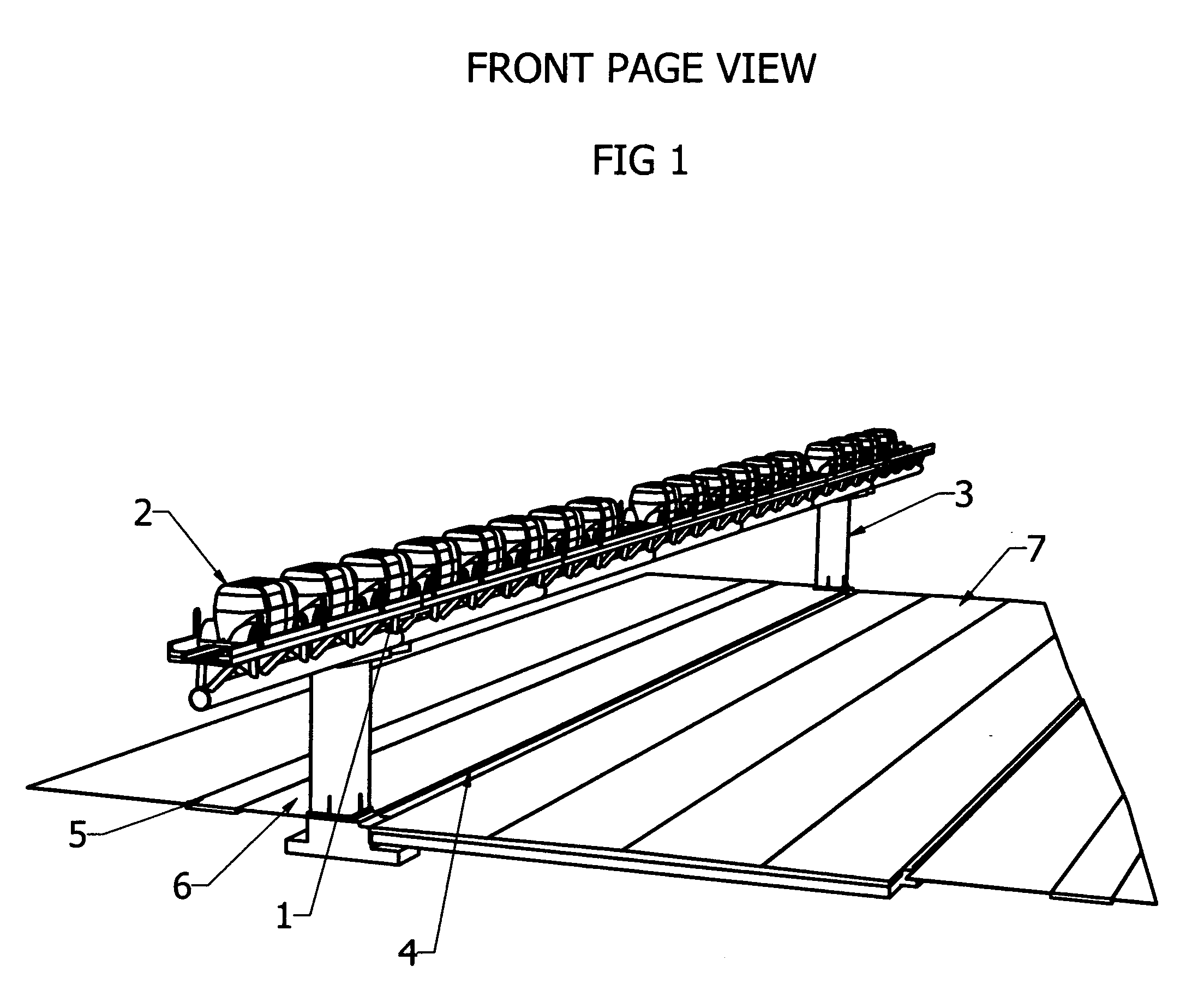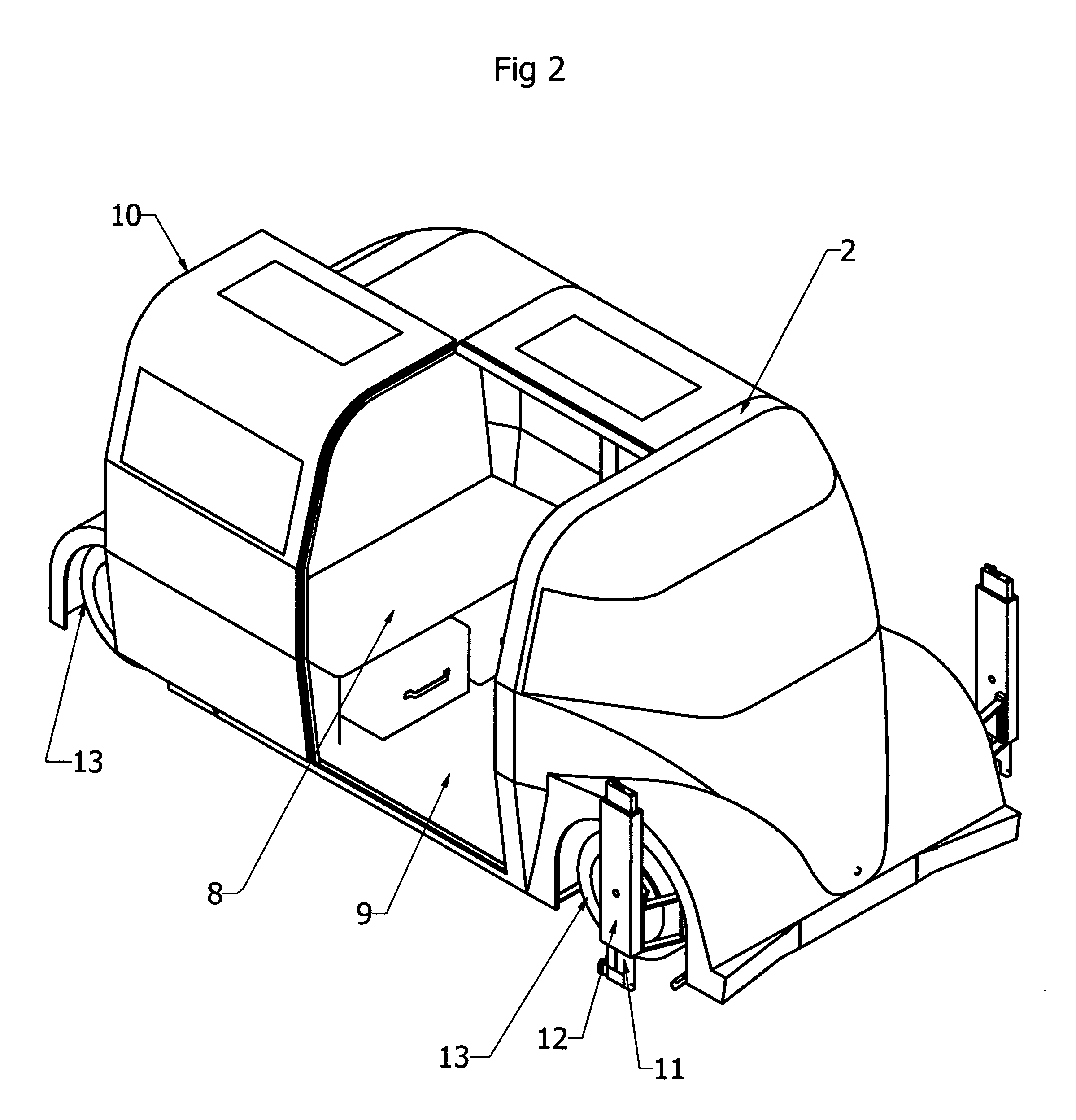Patent for a personal transportation network-ptn
- Summary
- Abstract
- Description
- Claims
- Application Information
AI Technical Summary
Benefits of technology
Problems solved by technology
Method used
Image
Examples
Embodiment Construction
[0028]Referring to FIG. 1 showing an elevated ribbon pathway 1 with cars 2 in groups of 4 to 16 riding in the dual ribbon pathway 1 and supported by a concrete or metal structure 3 located in the parkway 6 between the curb 4 and the sidewalk 5 of a local street with the pathway 1 overhanging the inner lane of the street 7. The pathway 1 is a prefabricated structure about 40 feet long that can be quickly put together in 200 foot increments and positioned on supports 3 located at about 200 foot increments.
[0029]Referring to FIG. 2 showing an electrically powered car 2 with one of two sliding doors 10 opened for a better view of the interior consists of one full size seat 8 that sits three across and a small jump seat 8 in the front facing rearward that can fit two small toddlers. The space under the seat 8 is large enough to hold two large suit cases and the jump seat 8 has room enough for one smaller suitcase that fits sideways. The floor space 9 is large enough to accommodate two wh...
PUM
 Login to View More
Login to View More Abstract
Description
Claims
Application Information
 Login to View More
Login to View More - R&D
- Intellectual Property
- Life Sciences
- Materials
- Tech Scout
- Unparalleled Data Quality
- Higher Quality Content
- 60% Fewer Hallucinations
Browse by: Latest US Patents, China's latest patents, Technical Efficacy Thesaurus, Application Domain, Technology Topic, Popular Technical Reports.
© 2025 PatSnap. All rights reserved.Legal|Privacy policy|Modern Slavery Act Transparency Statement|Sitemap|About US| Contact US: help@patsnap.com



